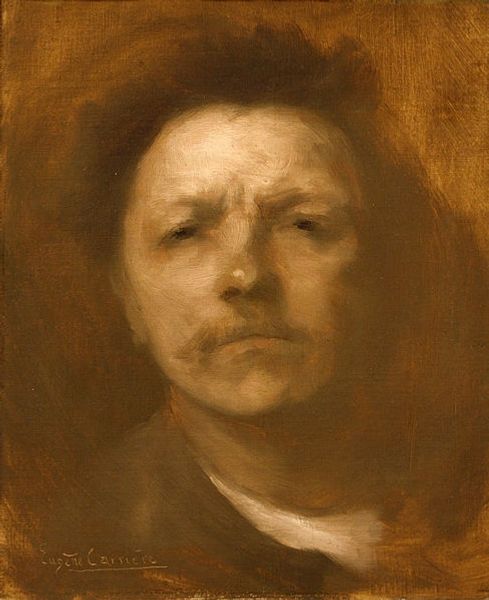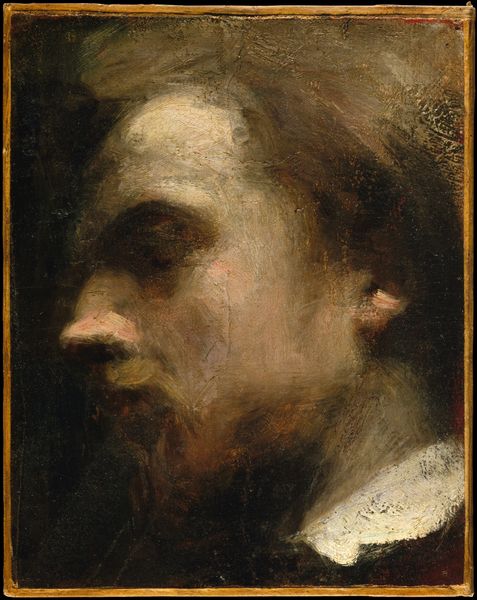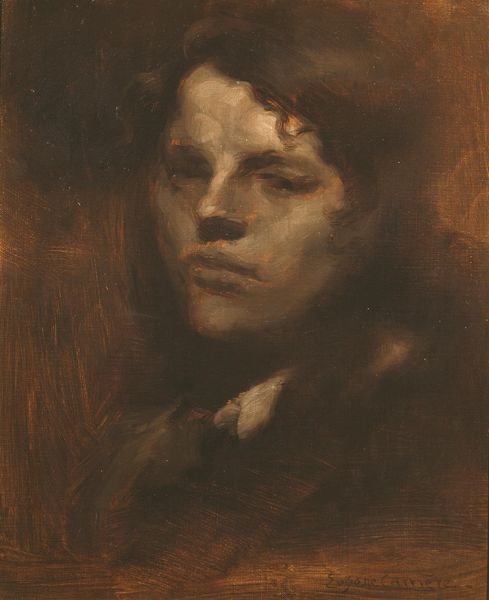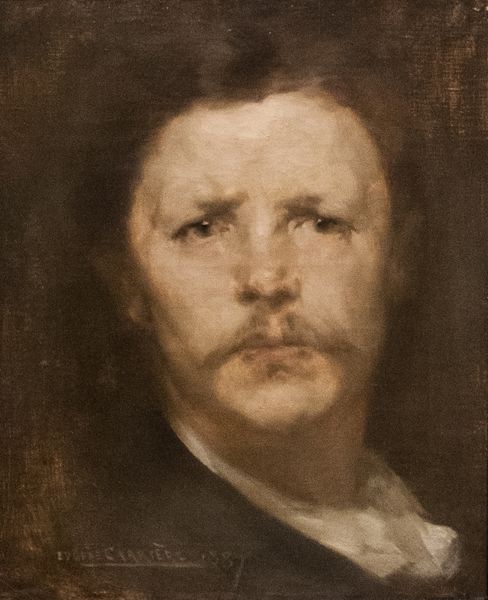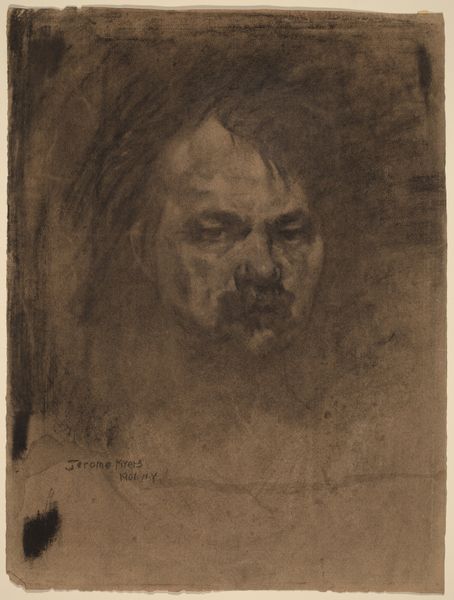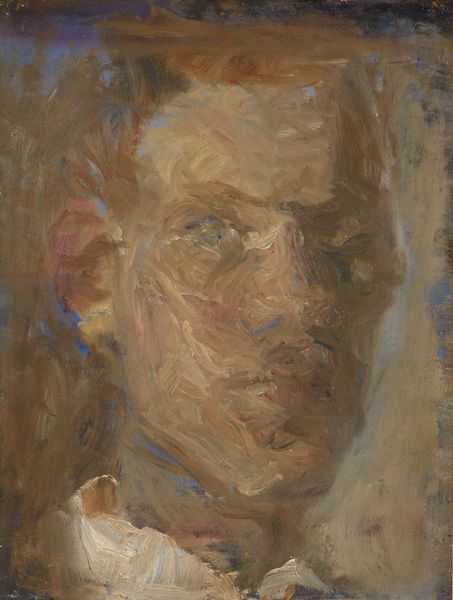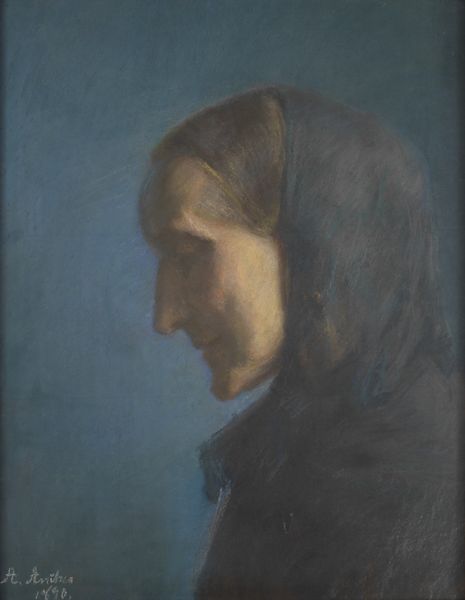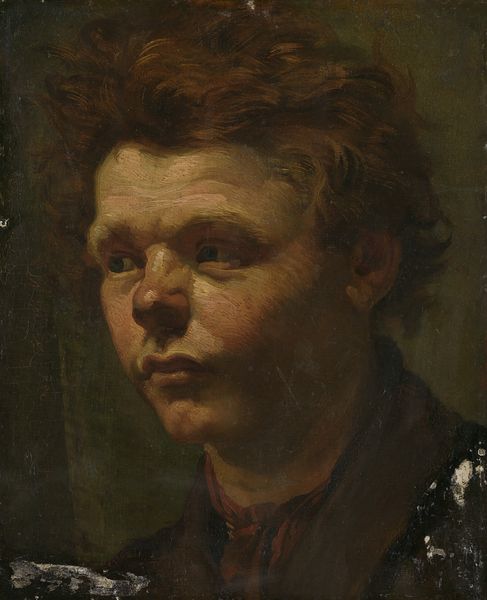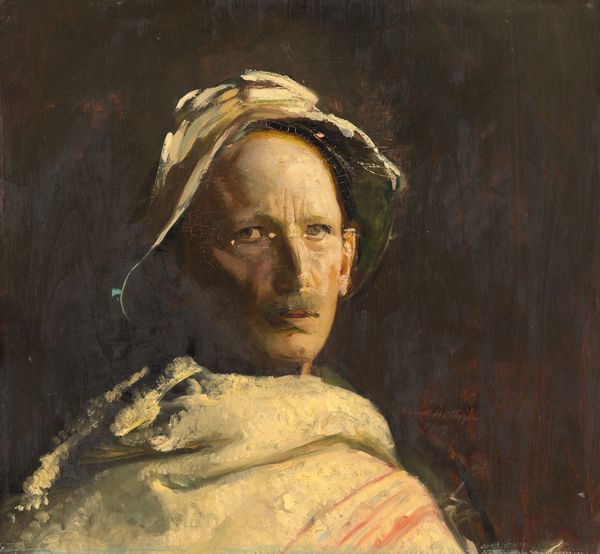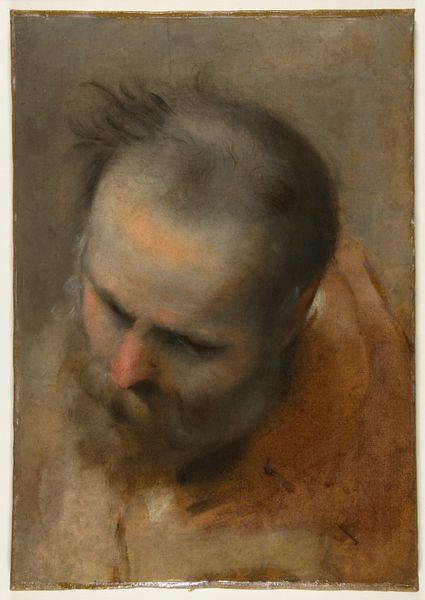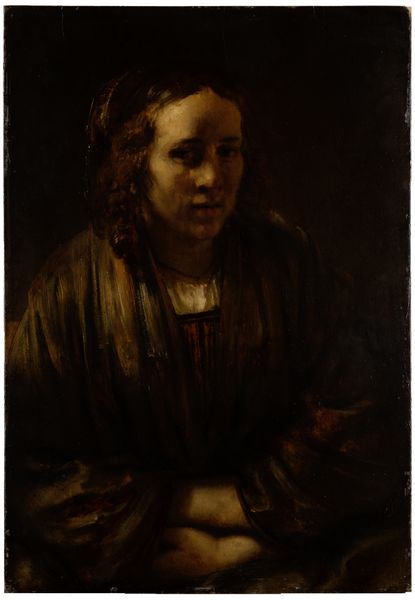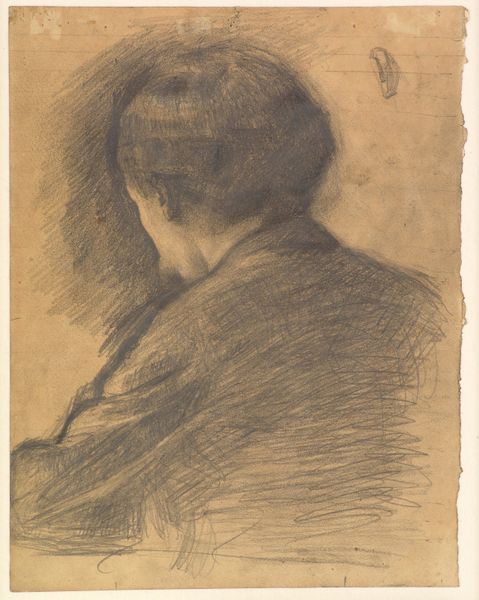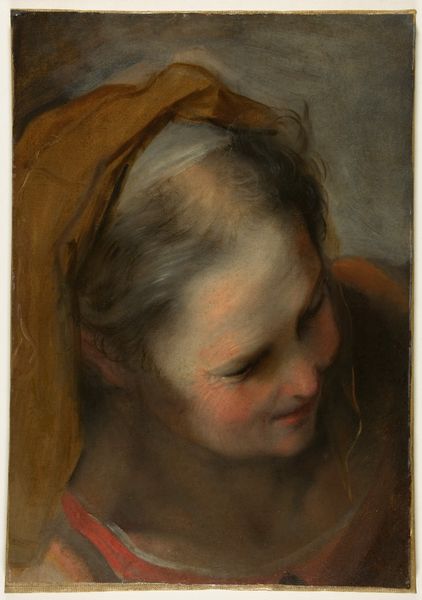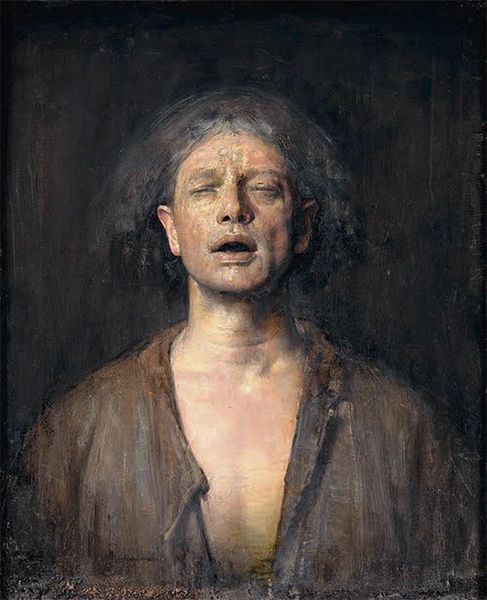
Dimensions: 16 1/4 x 12 7/8 in. (41.3 x 32.7 cm)
Copyright: Public Domain
Curator: I’m immediately drawn to the melancholy hanging around Eugene Carrière's "Self-Portrait" like a fog. The way the colors melt together feels almost… sepulchral? Editor: Indeed, the piece, painted between 1888 and 1898, definitely utilizes a muted palette to achieve that very feeling. Looking at it closer, the man emerges, quite literally, from a haze of earthy browns and beiges. Curator: Like a spirit trying to materialize! It makes me wonder what was going through Carrière's head as he worked. I can practically feel him grappling with mortality and maybe even the fleeting nature of identity. Editor: Given Carrière’s interest in the symbolist movement, I wouldn't be surprised if that were precisely his intent. Notice how his face isn’t rendered with stark detail but softened with blended brushstrokes—almost dreamlike. This obscures a definitive understanding and adds to the piece's psychological weight. Curator: So, the softness itself becomes part of the message? It's almost as if he is hinting at the self as something intangible. This impressionistic style employed with oil paint just elevates the canvas beyond a mere likeness; it transforms it into a mirror reflecting the anxieties of his time. Or maybe any time! Editor: Precisely. His work also captures a longing and melancholic resignation quite common near the end of the 19th century, a sentiment known in German as weltschmerz, literally "world-pain." Curator: And it echoes even now! Knowing it is held in the collection of The Metropolitan Museum of Art, one can sense how these painted emotions travel across lifetimes to stir similar sentiments in new observers. What's more, that direct gaze is incredibly compelling; you get a strong feeling that Carrière wants you to *feel* him. Editor: It serves as an excellent reminder that visual imagery and, in particular, portraiture serves not merely as a mirror of physical likeness, but instead, acts as a cultural container of lived experience across time. Curator: And that’s what makes it all so timelessly human, even as the colors fade.
Comments
No comments
Be the first to comment and join the conversation on the ultimate creative platform.
